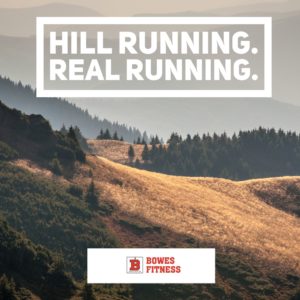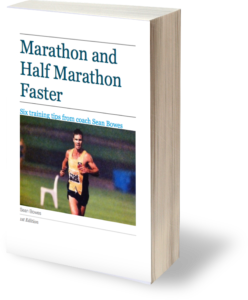
Few things make me darker than people who hate hills. The only thing that makes me darker perhaps, is people who don’t train right for hills. I see it all the time, this up again, down again hills running practice that is good in part but once you adapt to that stimulus you’ll need to increase the load and reduce your rest time. Which becomes impractical for the aforementioned because you’d be bolting down a steep hill like The Colt From Old Regret, not good to do in training runs. Too hard on the legs.
Enter, one of the greatest schoolboy running coaches ever to blow a whistle, Sir. Damien Coman (St. Joseph’s College, Gregory Terrace). Gregory Terrace runs through the Brisbane suburb of Spring Hill, which as the name suggests, has lots of hills around. Our interval training was always on the hillside at Vic. (Victoria) Park, a venue that provided everything you’d ever need to prepare for what I call ‘real running.’
Real running: a dog fight, run on a course where you may as well leave your Garmin on the table next to your mirror. See Australia’s three greatest-ever long distance runs: Deek in 1982 more hills than Kurnell, Binita Willis and Patrick Tiernan, both in Cross Country.
Ups and downs, slants left and right, steep hills, gentle slopes, bushes by the gravelly road (Seinfeld), low hanging branches and point turns. Our coach was a genius, on repeater he’d say, “Everyone will hammer up the hills because no one want to get passed on the hills,” he knew schoolboy pride well. He himself came from our – how shall I say – suburban Brother School at Nudgee where, ironically they don’t have hills.
His method was to work hard on the hills, yes, but he trained us to tighten our grip over the crest, along the top and back down. “You can claim more scalps by maintaining concentration and keeping rhythm after the crest, stay relaxed in the shoulders and hold form,” he’d say. Not only were we reminded constantly about form, focus and claiming scalps, our training was on hilly loops where we could train the theory physically.
Our 1km loop, memories of which I’ll take to my grave, went up a steep hill, then turned along the top still climbing for another 200m before kicking down, in one direction. The reverse, didn’t have the steep hill but climbed gradually for around half a km. Look, it was just a battle either way you went and we alternated of course. It was like, who do you want to meet first, Des or Troy?
One of my favourite/most hated/feared events, I believe to be the hardest road race there is, City2Surf, is choc-full of hills. Yet it’s amazing the amount of attention garnered by the so-called Heartbreak Hill, I guess schoolboy/girl psychology dies hard. How much do you hear, “…but I came (insert number here) up Heartbreak Hill. (It’s a 14km event F.Y.I.)
Most people are so focussed on how fast they did the hill but don’t pay true respect to the rest of the course. Yeah congrats, if you ran hard up the hill but what about the following 2km grind up to the top of Military Road, then down the other side? You can’t just put the cue in the rack, give yourself a hug and sign-off for the day. Well you can, at your own peril.
So think about hill training as race preparation. I suppose the hill climbs and jog back down are better than nothing. But after you adapt to that, simply adding more repetitions to the workout, you’ll be there for a month of bloody Sundays. It’s better to find a loop (something that goes in a circle) that includes hills (ups, downs, flats, slants left and right) but finishes near where it starts. This way you can practice all of the aforementioned benefits of the famous Vic. Park hillside and your session won’t take half a day plus you’ll get fitter.
Enter another great coach, Sean Williams (SWEAT Sydney and Melbourne Pack) whose monthly requirement contained two hills sessions. The first was 500m undulating, in a loop so you’d be close(ish) to the start when you finished each interval. I say “close(ish)” because this guy was crafty, the finish was around 200m from the start which you had to jog (more-or-less run) as your rest. Hard, but gee whiz it gets you fit. The other hill session, was 30 x 120m on a gentle hill, jog back to the start on a 1min cycle. So really there was no rest.
In a Gladwellian sense, I guess my advantage is having the sheer fortune of being a runner in a location when these two great coaches where throwing down. I don’t know what my life would be like had Como not harassed me year-after-year to run Cross Country for school, moreover I can guarantee I would never have learnt what real running training is had I never met Sean who is undoubtedly the Junk Yard Dog of running coaches.
But think about it, you don’t have to have a good coach to be able to train effectively for hill running. Just put yourself in a race position, have you ever in a race, run up a hill, got to the top and everyone turns and moseys on back down before going up again. I’ve never seen that. But I have run City2Surf, Gympie Rattler, and any other race where you need to be hill ready and you don’t get a lovely rest, a picnic blanket and a glass of San Pellegrino at the hilltop.
For those people who focus on running flat races (you make me sick) keep in mind, that hill running will boost your heart rate in training and therefore make you faster. If you’re into that?
If you’ve got heartbreaking hill problems, perhaps you’ll benefit from reading my FREE Marathon and Half Marathon Faster e-book. You can click on the link below and get your very own copy (opt-in required).
Click here to get your copy of Marathon and Half Marathon Faster by Sean Bowes.

